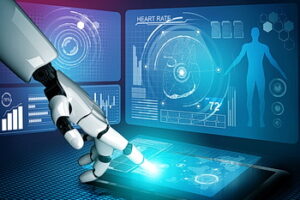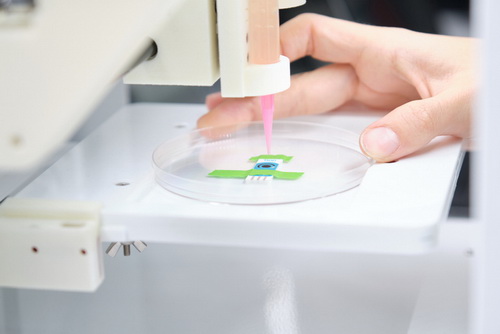
We published an article on medical advancements in 2018, but five years have passed, and the advances in medicine have been astounding. Let’s look at some of the most significant medical advancements in recent years that have the potential to change medicine as we know it today!
CRISPR Gene Editing

Clustered Regularly Interspaced Short Palindromic Repeats, or CRISPR, is a fairly new biological process that allows scientists to modify the DNA of living organisms.
The name arises from clustered DNA sequences composed of a succession of repeats (short or long patterns of DNA, also RNA, that occur in multiple copies) separated by unique sequences called spacers.
It has made significant strides in genealogical research, but what is most appealing is its potential ability to cure certain diseases by editing faulty genes responsible for the disease.
CAR T-Cell Therapy

This therapy, technically called Chimeric antigen receptor (CAR) T-cell therapy, uses a patient’s own immune cells to attack cancer cells. Your immune system keeps track of all the substances normally found in your body. Any substance the immune system doesn’t recognize triggers an alarm, causing the system to attack it.
More specifically, it is a way to get immune cells called T cells (a type of white blood cell) to fight cancer by changing them in the lab so they can find and destroy the bad cells.
CAR T-cell therapy is also sometimes called cell-based gene therapy because it involves altering the genes inside T cells to help them attack the carcinogen.
This type of treatment can be very helpful in treating some types of cancer, even when other treatments are no longer working.
3D Printing in Medicine

Most of us have already seen or heard of 3D printing, but how is it applied to medicine? 3D printing technology has already been used to create customized implants, prosthetics, and human organs. Let’s look at what 3D printing has done for the medical field, starting with the heart, as major accomplishments have been achieved in creating an actual 3D heart and some individual organs.
The 3D Heart
Doctors and scientists at Tel Aviv University in Israel have created the world’s first 3D-printed heart from human cells. This heart includes all the major components that connect to this life-and-death organ: the blood vessels, left and right ventricles, and its chambers.
At Stanford University, bioengineers are experimenting with living cells that will develop into living heart tissue using 3D printing.
But that’s not all. 3D printing that can replace defective or missing human organs is being researched worldwide. Let’s take a look.
- Surgical Training
Using 3D-printed anatomical models is undoubtedly the perfect training for medical professionals. Surgeons can now understand the patient’s anatomy more than ever before and improve surgical outcomes. - Prosthetics
3D printing allows for the creation of personalized prosthetics, which is designed to match the anatomy of the individual perfectly. Not only is this a great advance for those who lose limbs due to diseases or accidents, but it is extremely helpful for over 150,000 veterans who would benefit from this technology. - Patient-Specific Implants: Surgeons can use 3D printing to create implants tailored to a patient’s unique anatomy. This is particularly valuable in complex cases where off-the-shelf implants may not fit optimally or provide the required level of support.
- Organ and Tissue Bioprinting: While still an evolving technology, 3D bioprinting holds great promise for creating functional human organs and tissues for transplantation. This could potentially alleviate the shortage of organ donors and reduce the risk of transplant rejection.
- Drug Delivery Systems: 3D printing enables the production of complex drug delivery systems, such as personalized drug dosage forms or implants that release drugs gradually over time, improving treatment effectiveness and patient compliance.
- Medical Devices: 3D printing allows for the rapid prototyping and production of medical devices, ranging from simple instruments to more complex tools used in surgeries or diagnostic procedures.
- Orthotics and Wearables: Customized orthotic devices, such as braces and supports, can be easily produced using 3D printing technology, improving patient comfort and treatment outcomes.
- Education and Research: 3D-printed models are valuable educational tools for medical students and researchers. They can help them learn anatomy, practice surgical techniques, and explore new treatment options.
- Accessibility and Cost-Effectiveness: 3D printing can reduce the cost of manufacturing medical devices and prosthetics, making them more accessible to patients, especially in resource-constrained regions.
- Emergency Medicine: In remote or disaster-stricken areas, 3D printing can quickly produce essential medical supplies or devices, helping to bridge the gap until conventional supply chains can be restored.
- Surgical Training
It’s important to note that while 3D printing has shown immense potential in the medical field, it also raises some ethical and regulatory considerations, especially concerning bioprinting and patient-specific implants. Therefore, ongoing research and responsible implementation are crucial to fully harnessing this technology’s benefits while upholding patient safety and ethical standards.
Precision Medicine
Precision medicine is a personalized approach to healthcare that considers a patient’s unique genetic, environmental, and lifestyle factors when diagnosing and treating disease. It has the potential to improve patient outcomes greatly.
Regenerative Medicine
There are many animals that can regenerate. Now, add humans to the list. Here, doctors use stem cells and other techniques to repair or replace damaged tissue or organs. It can potentially revolutionize the treatment of a wide range of diseases and injuries.
Liquid Biopsies
Liquid biopsies are a less invasive alternative to traditional biopsies and can detect cancer at an early stage. They are expected to become more widely used in the coming years.
Nanomedicine

No. Not Nano Nano from Mork and Mindy. This is mind-boggling stuff!
Nanomedicine involves using very tiny man-made devices called nanoparticles to deliver drugs and treat diseases at a cellular level. It has the potential to improve drug efficacy and reduce side effects greatly.
Virtual Reality Therapy
Virtual reality therapy is a type of therapy that uses immersive technology to help patients with mental health disorders, phobias, and chronic pain. It is effective in some cases and is expected to continue growing in popularity.
Artificial Intelligence

We saved the best for last! Artificial Intelligence. AI is used to improve diagnosis, develop personalized treatments, and streamline administrative tasks. It is expected to become more prevalent in the coming years.
One of the most significant advancements in medical AI is its potential to diagnose issues with much greater accuracy. Machine learning algorithms can now analyze X-rays, MRIs, and CT scans with a precision never imagined.
These AI programs are designed to detect subtle anomalies that doctors might miss. These faint but undoubtedly significant detections can provide more accurate diagnoses of cancer and other serious medical issues. Subsequently, they will allow medical professionals to detect life-threatening diseases much earlier.
Conclusion
We live in an exciting time for medical advancements, and there is no telling how far these technologies will take us. However, anyone who watches Star Trek may have a pretty good idea of what’s in store!

